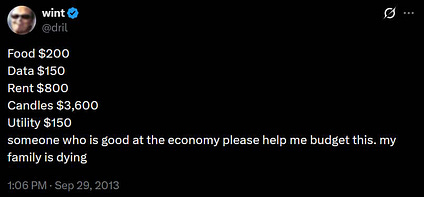South Africa: Child Support Grant Must Be Increased to End Child Hunger, Report Says – allAfrica.com

Report on Child Poverty and the Efficacy of the Child Support Grant in Achieving Sustainable Development Goals in South Africa
Introduction
This report analyzes the findings of the latest Child Gauge Report from the Children’s Institute at the University of Cape Town. It assesses the effectiveness of South Africa’s Child Support Grant (CSG) as a poverty alleviation tool, with a specific focus on its alignment with and impact on the nation’s progress towards key Sustainable Development Goals (SDGs), particularly those concerning poverty, hunger, health, and inequality.
SDG 1 (No Poverty) & SDG 2 (Zero Hunger): The Core Challenge
The CSG is South Africa’s largest social protection program for children, yet its current implementation falls short of achieving SDG 1 (No Poverty) and SDG 2 (Zero Hunger). The grant’s inadequacy perpetuates a cycle of poverty and food insecurity.
- Insufficient Financial Support: The CSG payment of R560 per month is substantially below the national food poverty line of R796, which represents the minimum income required for basic nutritional survival.
- Regressing Poverty Levels: Despite initial successes after its introduction in 1998, progress has reversed. Compared to 2019, an additional 1.2 million children were living below the food poverty line in 2024.
- Post-Pandemic Impact: Child food poverty rates increased from 33% in 2019 to 39% during the 2020 lockdown and have remained high, indicating a failure to build resilience against economic shocks and protect the most vulnerable.
SDG 3 (Good Health and Well-being): The Health Impacts of Malnutrition
The failure to ensure adequate nutrition directly undermines SDG 3 (Good Health and Well-being), leading to severe and long-term health consequences for children.
- High Stunting Rates: The 2021-2023 National Food and Nutrition Security Survey revealed that 29% of children under the age of five are stunted. Stunting is a critical indicator of chronic malnutrition with irreversible effects on physical and cognitive development.
- Risk of Malnutrition: Children in households reliant on the CSG remain at high risk of various forms of malnutrition, including micronutrient deficiencies, which compromise their overall health and future potential.
SDG 10 (Reduced Inequalities): Analysis of Disparities
The data reveals stark geographic and socio-economic disparities in child poverty, highlighting significant challenges in achieving SDG 10 (Reduced Inequalities).
- Provincial Inequality: Poverty is deeply entrenched in specific provinces. Over 75% of children in the Eastern Cape, KwaZulu-Natal, Limpopo, and North West live in poverty (as defined by the upper-bound poverty line of R1,634).
- Rural and Urban Divides: Poverty is most concentrated in rural former homelands, where 86% of children are poor. Concurrently, urban poverty has risen sharply, with 56% of urban children living below the upper-bound poverty line in 2024, up from 41% in 2019.
- Worsening Conditions in Economic Hubs: Even in wealthier provinces, child poverty has increased substantially. Gauteng saw an increase from 35% to 54% between 2019 and 2024, while the Western Cape’s rate rose from 27% to 41%.
SDG 16 (Peace, Justice and Strong Institutions): Institutional Barriers to Social Protection
The effectiveness of the social protection system, a key component of SDG 16, is compromised by institutional barriers that prevent eligible children from accessing the grant.
- Low Grant Uptake: A significant number of eligible children, particularly infants, are not enrolled in the program. In 2020, 48% of eligible infants did not receive the CSG.
- Administrative Hurdles: Barriers to access include:
- Lack of official documentation such as birth certificates and ID books.
- Confusion among applicants regarding eligibility and means-testing requirements.
- Logistical and financial challenges in accessing South African Social Security Agency (SASSA) offices.
Conclusion and Recommendations
The Child Gauge Report indicates that while the CSG has a wide reach, its value is critically insufficient to combat child hunger and poverty effectively. This inadequacy actively hinders South Africa’s progress towards SDGs 1, 2, 3, and 10.
- Primary Recommendation: Researchers conclude that to meaningfully address child hunger and malnutrition and make substantive progress on the SDGs, it is essential to increase the value of the Child Support Grant to at least match the food poverty line.
- Institutional Strengthening: Addressing the administrative barriers to access is crucial to ensure the grant reaches all eligible children, thereby strengthening the social protection system in line with SDG 16.
Analysis of Sustainable Development Goals in the Article
1. Which SDGs are addressed or connected to the issues highlighted in the article?
The article primarily addresses issues related to three Sustainable Development Goals (SDGs):
- SDG 1: No Poverty. The core theme of the article is child poverty in South Africa. It discusses the Child Support Grant (CSG) as a poverty alleviation tool, measures poverty using the “food poverty line” and “upper-bound poverty line,” and provides statistics on the percentage of children living in poverty.
- SDG 2: Zero Hunger. The article directly links poverty to child hunger and malnutrition. It highlights that the CSG is insufficient to meet basic nutritional needs, leading to an increase in the number of children short of food. It also explicitly mentions malnutrition and stunting as consequences of hunger.
- SDG 10: Reduced Inequalities. The article points out significant disparities in poverty rates across different provinces (“Provincial disparities are stark”), between urban and rural areas (“Poverty remains highest in rural former homelands”), and in access to social support for the most vulnerable, such as the low take-up of the CSG among infants.
2. What specific targets under those SDGs can be identified based on the article’s content?
Based on the article’s content, the following specific targets can be identified:
-
Under SDG 1 (No Poverty):
- Target 1.2: By 2030, reduce at least by half the proportion of men, women and children of all ages living in poverty in all its dimensions according to national definitions. The article directly discusses the proportion of children living below nationally defined poverty lines (food poverty line and upper-bound poverty line) and tracks the changes in these proportions over time, noting that “poverty rates were higher in 2024 than they were in the pre-lockdown year of 2019.”
- Target 1.3: Implement nationally appropriate social protection systems and measures for all, including floors, and by 2030 achieve substantial coverage of the poor and the vulnerable. The article’s entire focus is on the Child Support Grant (CSG), which is a national social protection system. It evaluates its reach (“received by 13-million children”) and its effectiveness, concluding it is insufficient. It also highlights gaps in coverage, noting that the “slow take-up of the CSG among young children remains a concern.”
-
Under SDG 2 (Zero Hunger):
- Target 2.1: By 2030, end hunger and ensure access by all people, in particular the poor and people in vulnerable situations, including infants, to safe, nutritious and sufficient food all year round. The article states that the CSG “remains below the food poverty line, leaving many households unable to meet basic nutritional needs.” It quantifies the problem by stating “1.2-million more children are short of food than in 2019.”
- Target 2.2: By 2030, end all forms of malnutrition… including achieving… targets on stunting… in children under 5 years of age. The article explicitly addresses this target by stating that “child hunger and malnutrition remain high, with stunting among children under 5 years old at 29%.”
-
Under SDG 10 (Reduced Inequalities):
- Target 10.2: By 2030, empower and promote the social, economic and political inclusion of all, irrespective of age… or economic or other status. The article implies a lack of inclusion by describing barriers that prevent eligible infants from receiving the CSG, such as “lack of documentation… and challenges accessing SASSA offices.” This shows how the most vulnerable are being excluded from essential support systems.
- Target 10.4: Adopt policies, especially fiscal, wage and social protection policies, and progressively achieve greater equality. The CSG is a social protection policy discussed in the article. The analysis of its value (R560) compared to the cost of living (food poverty line at R796) is a direct evaluation of the adequacy of this policy in achieving greater equality. The stark provincial and rural-urban disparities in poverty also highlight the need for more effective policies to reduce inequality.
3. Are there any indicators mentioned or implied in the article that can be used to measure progress towards the identified targets?
Yes, the article mentions several specific quantitative and qualitative indicators that can be used to measure progress:
-
For SDG 1 (No Poverty):
- Indicator 1.2.1 (Proportion of population living below the national poverty line): The article provides precise data for this indicator. It states, “In 2019, 33% of children were below the food poverty line,” and that this rose to 39% during the lockdown. It also mentions the proportion of children below the “upper-bound poverty line.”
- Indicator 1.3.1 (Proportion of population covered by social protection floors/systems): The article provides data points for this indicator, stating the CSG “was received by 13-million children in 2024.” It also implies a gap in coverage by noting that in 2020, “48% of eligible infants did not receive the grant.”
-
For SDG 2 (Zero Hunger):
- Indicator 2.1.1 (Prevalence of undernourishment): The article implies this through its discussion of “child hunger” and the statement that there are “1.2-million more children are short of food than in 2019.” The value of the CSG (R560) versus the food poverty line (R796) is a direct measure of the financial gap preventing access to sufficient food.
- Indicator 2.2.1 (Prevalence of stunting among children under 5 years of age): The article gives a direct and specific figure for this indicator: “The 2021-2023 National Food and Nutrition Security Survey found that 29% of children under 5 years old in the country were stunted.”
-
For SDG 10 (Reduced Inequalities):
- Disaggregated poverty data: While not a formal indicator number, the article provides data that measures inequality. It breaks down poverty rates by geography, showing progress (or lack thereof) toward reducing inequality. For example, “over 75% of children in the Eastern Cape, KwaZulu-Natal, Limpopo and North West are poor,” compared to lower (but rising) rates in Gauteng and the Western Cape. It also compares rural (“86% of children below the upper-bound poverty line”) and urban areas.
4. Summary Table of SDGs, Targets, and Indicators
| SDGs | Targets | Indicators Identified in the Article |
|---|---|---|
| 1. No Poverty |
1.2: Reduce at least by half the proportion of children living in poverty according to national definitions.
1.3: Implement nationally appropriate social protection systems and achieve substantial coverage of the poor. |
– Percentage of children below the food poverty line (33% in 2019). – Percentage of children below the upper-bound poverty line. – Number of children receiving the Child Support Grant (13 million). – Percentage of eligible infants not receiving the grant (48% in 2020). |
| 2. Zero Hunger |
2.1: End hunger and ensure access for all, particularly the poor and infants, to nutritious and sufficient food.
2.2: End all forms of malnutrition, including stunting in children under 5. |
– Number of additional children short of food (1.2 million more than in 2019). – The gap between the CSG value (R560) and the food poverty line (R796). – Prevalence of stunting in children under 5 (29%). |
| 10. Reduced Inequalities |
10.2: Empower and promote the social and economic inclusion of all.
10.4: Adopt policies, especially social protection policies, to progressively achieve greater equality. |
– Disparities in child poverty rates between provinces (e.g., over 75% in Eastern Cape vs. 41% in Western Cape). – Disparities between rural (86% poor) and urban (56% poor) areas. – Barriers to accessing social grants for infants (e.g., lack of documentation). |
Source: allafrica.com
What is Your Reaction?
 Like
0
Like
0
 Dislike
0
Dislike
0
 Love
0
Love
0
 Funny
0
Funny
0
 Angry
0
Angry
0
 Sad
0
Sad
0
 Wow
0
Wow
0















































/environment-climate-change-and-health-(ech)/water-sanitation-hygiene-and-health-(wsh)/landfill-tuvalu-36092.tmb-1200v.jpg?sfvrsn=5c21fe40_1#)


.jpg.webp?itok=0ZsAnae9#)

























